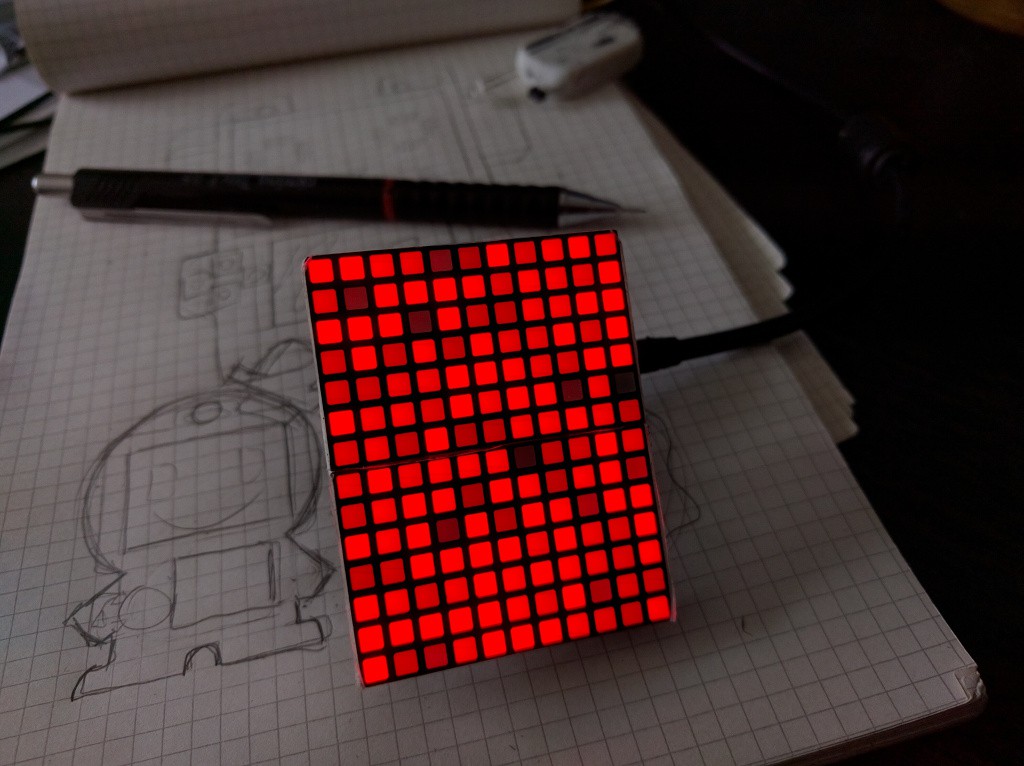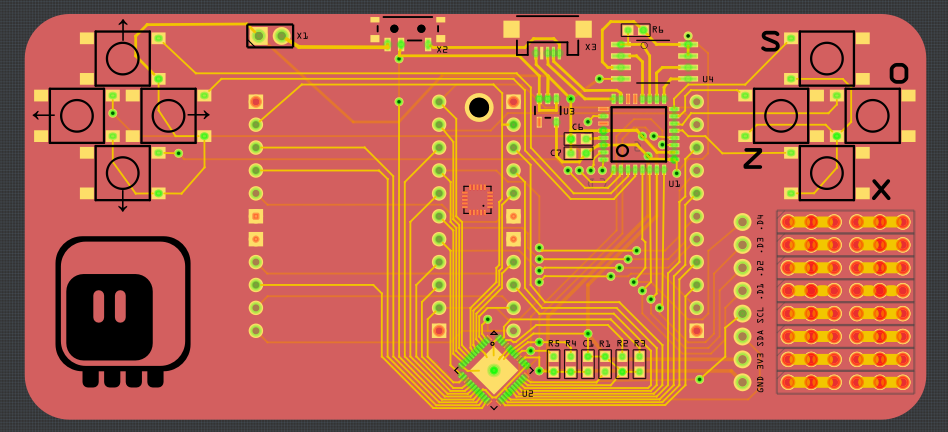The Matrix¶
Published on 2018-04-14 in CircuitPython Badge.
After yesterday’s log, it has become clear to me what shape and size the badge should have and what I should use for the display. Behold:

This is a matrix I made when playing with the ISSI chips for the D1 Mini Matrix Deluxe Shields . It’s two 7×11 matrices, side by side, driven by the IS31FL3733 chip. Each pixel has 256 values of brightness, independent from the 256 values of global brightness and with gamma correction lookup table. It also has 4 kinds of hardware blinking, selected per pixel. And everything controlled over an I2C bus. The only problem with this is that the matrices have a rather stupid pinout, so there is not even a chance for routing it nicely in order. But we can remap rows and columns in software, so we should be fine.
As for the shape, I decided to make it a game handheld again, with a large empty area below it for conference logos and participant’s name. This way it can be held comfortably for playing. For now I’m skipping the empty half of the PCB — no reason to pay for it in the prototypes, when it won’t contain any important parts. The final design will be exactly 10×10cm.
I made a first stab at the PCB routing:

You can see that LED driver chip has some dense traces. There is a direction pad and four buttons, also arranged in a direction pad — so that you could make a two-player game, or swap the buttons for left- handed people. There is also a prototyping area in the corner, where you can connect additional parts or modules.
I wanted to include an accelerometer (the small footprint in the middle), but I’m having a hard time routing the traces for it. It has to be in the center of the board (so that rotations work right), but there is quite a bit of things in there. Also, the design generally has too many vias to my taste. Plus the USB socket is too thick, so the matrix that comes on top of it would stick out a bit — I’m thinking about moving it to the side.
There is no battery charging, since at this size I can simply include a battery holder for 3 AAA batteries — that should be enough for a day of a conference. Some tests are in order, of course.
I’m not ordering the PCB just yet — I’m hoping I can do a better job with the design.
 deshipu.art
deshipu.art